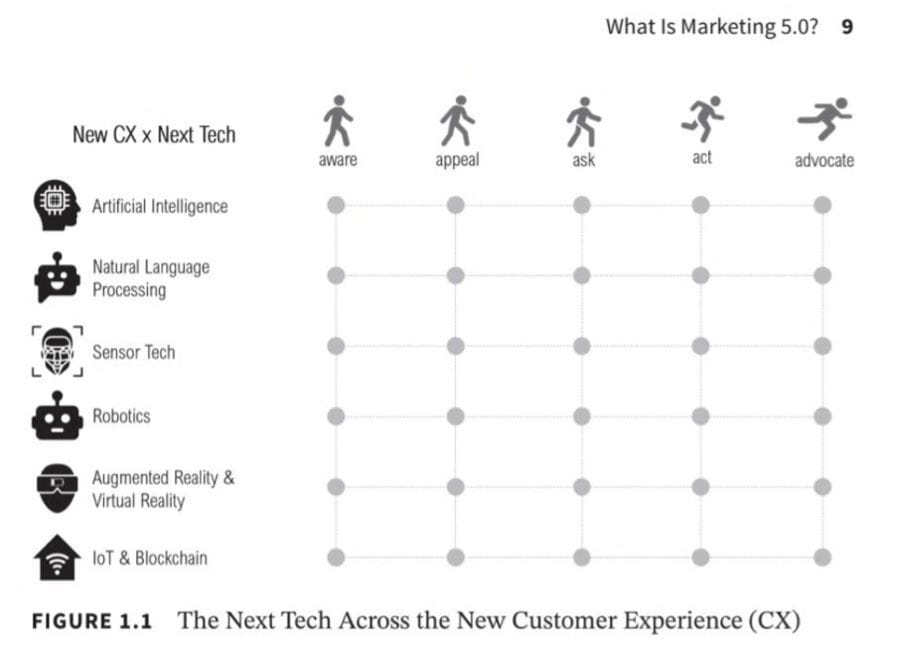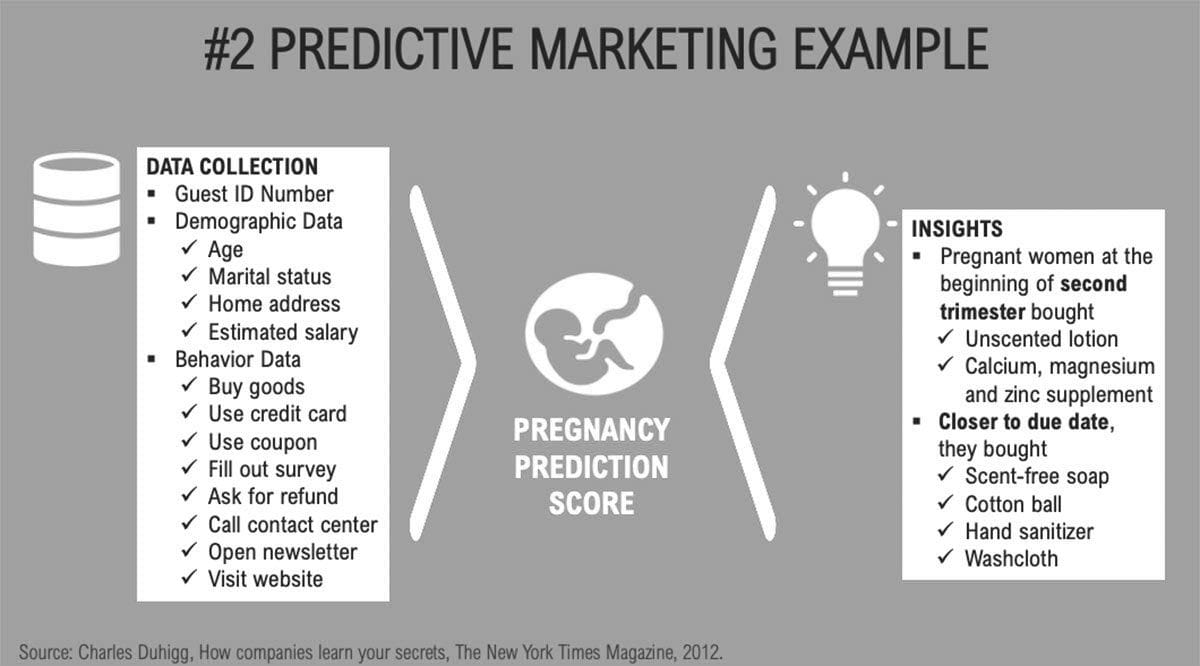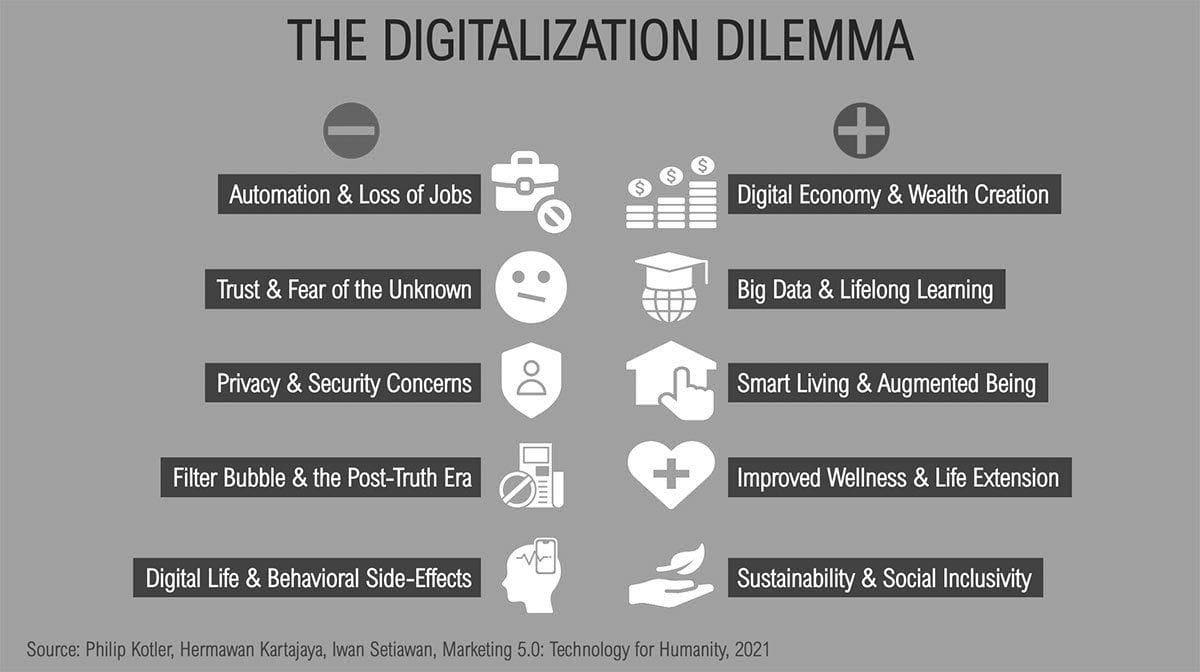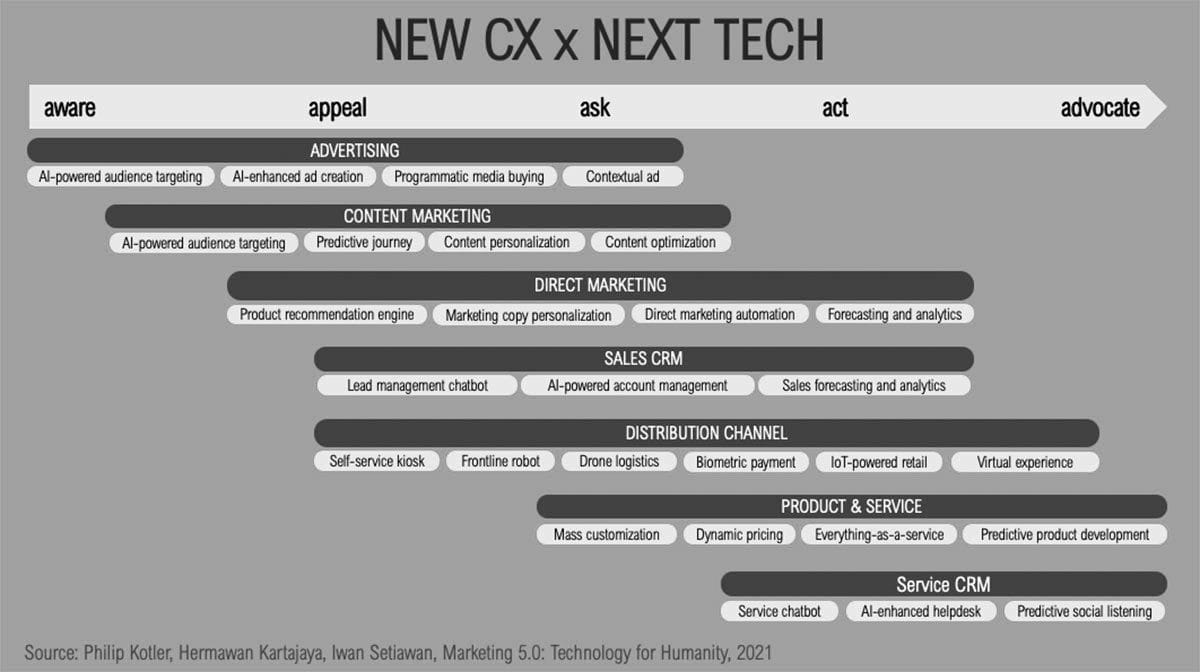Marketing 5.0
)
5 Technologies changing customers experiences
Kolter is known as a marketing leader, and over the past few decades, he has led the profession in describing the marketing approach.
Marketing 1.0
Marketing was driven by products (Product-driven). Marketers in this era were focused on selling what the companies thought was the best product.
Marketing 2.0
Marketing 2.0 shifted from company-centric marketing to customer-centric marketing (customer-oriented). Kotler explained that marketing must be segmented (subdivided) and products must be appropriate for the markets they serve.
Marketing 3.0
Marketing 3.0 is human-centred. The shift from customer-centric 2.0 to human-centric marketing, which responds to the needs and desires of customers while at the same time influencing society and the environment and facilitating change in the world.
Marketing 4.0
Marketing has shifted to a digital strategy since Marketing 4.0 (Moving to Digital).
In Marketing 5.0, marketing will enter a phase where advanced technologies will be used in marketing, such as AI, robotics, and IoT, to deepen marketing activities further.
In Marketing 5.0, Philip Kotler explains how marketers can use technology to address customers’ needs and make a difference. It is about using humanising technology to create, communicate and deliver enhanced value across the customer journey.
In a new age when marketers are struggling with the digital transformation of business and the changing behaviour of customers, this book provides marketers with a way to integrate technological and business model evolution with the dramatic shifts in consumer behaviour that have happened in the last decade. Here are five key topics he discusses.

Data-Driven Marketing
Data-driven marketing is collecting and analysing big data from various internal and external sources and building a data ecosystem to drive and optimise marketing decisions. This is the discipline of Marketing 5.0: every decision must be made with sufficient data. It is a prerequisite to making the best marketing decisions. With all these new technologies there is no reason that a marketer can't determine the success of a campaign before it commences.The expansion of Big Data allows us to take many sources of data.
Agile Marketing
Agile marketing uses decentralised, cross-functional teams to rapidly conceptualise, design, develop and validate products and marketing campaigns. The organisational agility to deal with the ever-changing market becomes the second discipline the companies must master to ensure successful Marketing 5.0 implementation.
 Predictive Marketing
Predictive Marketing
Predictive marketing is the process of building and using predictive analytics, sometimes with machine learning to predict the results of marketing activities before launch. The first application allows businesses to envision and proactively influence how the market will respond.
Contextual Marketing
Contextual marketing is the activity of identifying and profiling as well as profiling customers with personalised interactions by utilising sensors and digital interfaces in the physical space. It is the backbone that allows marketers to perform 1 to 1 marketing in real-time, depending on the customer context.
Augmented Marketing
Augmented marketing is the use of digital technology to improve the productivity of customer-facing marketing with human-mimicking technologies such as chatbots and virtual assistants. The third application ensures that marketers combine to speed and convenience of digital interface with the warmth and empathy of people-centric touchpoints.
New Generation Gap
 Apart from these ideas above, Kolter also describes that the make-up societies have 5 generations influencing the attitudes, preferences and behaviours of our marketplace for the first time. While the Baby Boomers and Gen X still hold most of the leadership positions, digital-savvy Gen Y and Z are most of the workforce and the largest consumer group. This creates tensions and disconnects as those deciding on marketing strategies need to relate to new audiences and ways of buying.
Apart from these ideas above, Kolter also describes that the make-up societies have 5 generations influencing the attitudes, preferences and behaviours of our marketplace for the first time. While the Baby Boomers and Gen X still hold most of the leadership positions, digital-savvy Gen Y and Z are most of the workforce and the largest consumer group. This creates tensions and disconnects as those deciding on marketing strategies need to relate to new audiences and ways of buying.
Each generation and life stage has different motivations, media habits and values. Understanding these differences is critical to executing great marketing. Eventuallty with technologies we will be marketing to smaller and smaller niches with 1 to 1 marketing not too far over the horizon.
Wealth Divide Grows
Marketing 5.0 also explains a trend for wealth imbalance which creates a polarised marketplace.
- Upper Class - fueling the luxury market
- Expanding mass market for low-cost high value things
- Middle market - contracting and even disappearing
Marketing Faces the Dilemma of Digitalisation
 Now we are faced with the dilemma of digitalization. The evolution of marketing technology has brought about many unsettling changes in customer psychology and marketing thinking. People fear that automation through robotics will lead to job loss. They are also anxious because the evolution of technology is unknown, and the future is difficult to predict.
Now we are faced with the dilemma of digitalization. The evolution of marketing technology has brought about many unsettling changes in customer psychology and marketing thinking. People fear that automation through robotics will lead to job loss. They are also anxious because the evolution of technology is unknown, and the future is difficult to predict.
There are also concerns about privacy and security. Many people are concerned that technology companies will have information about consumer behaviour and consumer profiles, as well as consumer demographic data and that their privacy will be violated and they may be involved in cyber fraud and crime. Thus, today’s marketing technology creates a lot of anxiety, but the dilemma of digitization arises because technology creates opportunities and pressure.
HeaderTechnology Maturity Leads to Marketing 5.0
 Several technologies the book calls “enablers” (technology-enabled) when discussing ”Marketing 5.0”. Computational power, open source software, the Internet, cloud computing, mobile devices, and big data are “enablers”.
Several technologies the book calls “enablers” (technology-enabled) when discussing ”Marketing 5.0”. Computational power, open source software, the Internet, cloud computing, mobile devices, and big data are “enablers”.
 Kolter is one of those thought leaders. You have to invest your time in reading. We all need to explore how we can continue to provide the best customer experiences and part of that is leveraging the new technologies. There are many methods available today, and more will be available in the future. And we will continue to see more and more opportunities to use next-generation technologies for better customer experiences. By effectively employing next-generation technologies in each measure, we can amplify the range of customer experience. To read more about marketing trends, go to this blog.
Kolter is one of those thought leaders. You have to invest your time in reading. We all need to explore how we can continue to provide the best customer experiences and part of that is leveraging the new technologies. There are many methods available today, and more will be available in the future. And we will continue to see more and more opportunities to use next-generation technologies for better customer experiences. By effectively employing next-generation technologies in each measure, we can amplify the range of customer experience. To read more about marketing trends, go to this blog.
) Author:Danielle MacInnis
Author:Danielle MacInnis| Tags:Marketing technologyMarketing EducationMarketing Trends |
Post comment




